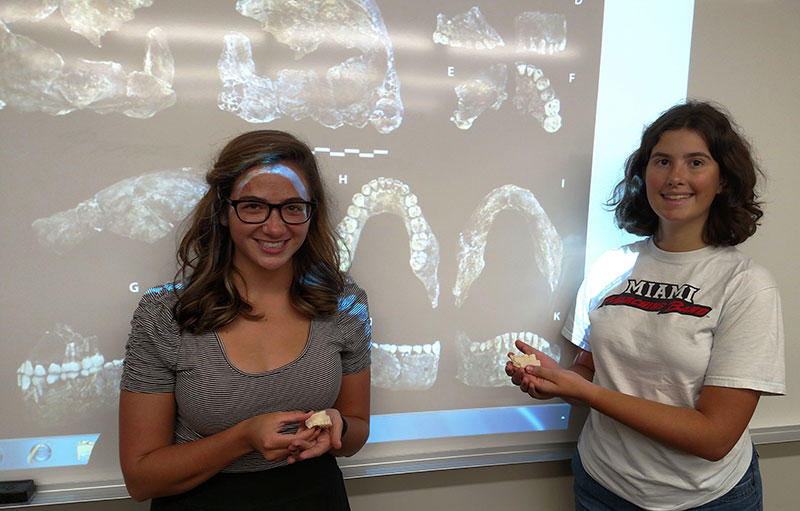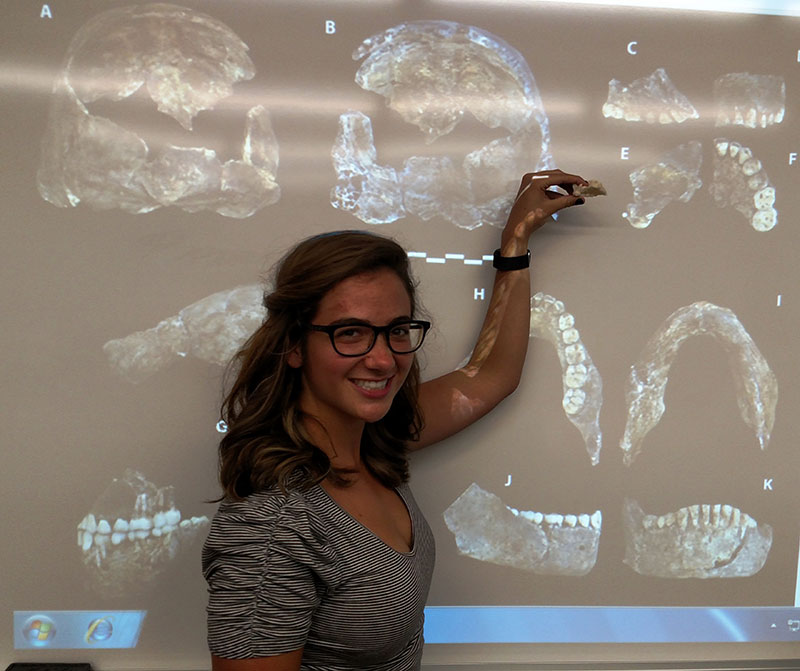

3-D technology puts human ancestor bone replicas into Miami students' hands

Anthropology major Micayla Spiros compares a plastic three-dimensional print of a Homo naledi jawbone to a photograph of the fossil.
Less than a week after the announcement of the discovery of Homo naledi, a new ancestor of humans that made global headlines, Miami University students were holding precise plastic replicas of some of the fossils in their hands.
Students looking at websites about the discovery found that the research team had uploaded not only photos but three-dimensional digital scans of many of the fossils.
With the help of Jeb Card, visiting assistant professor of anthropology, and John Williams of Miami’s Business, Engineering, Science and Technology (B.E.S.T.) Library, copies of fossil jawbones, teeth and a finger bone were processed and printed using a 3-D printer at the B.E.S.T. Library.
The anthropology department hopes to also download and print some additional cranial and other replicas.
“I am in the fortunate position of teaching paleoanthropology this semester,” said Linda Marchant, professor of anthropology. “How often does it happen that a momentous discovery happens while you are teaching a class on that subject?”
“Thanks to these new technologies, I’ll be able to show them a sample of the hundreds of newly discovered fossils,” she added.
Scott Suarez, assistant professor of anthropology, is developing a new lab exercise for his Foundations of Biological Anthropology class. Students will measure the replicas and compare them to casts of Australeopithicus africanus and Homo habilis, the closest known relatives of naledi.
“This is as real as it gets in letting students see firsthand, and in their hands, what the fossil record looks like, even as more of it is being uncovered,” Marchant said.
Homo naledi is an extinct species of hominin whose fossil skeletons were found earlier this month in South Africa's Gauteng province, in the Rising Star Cave system, and announced earlier this month. Fossils of at least fifteen individuals, amounting to 1,550 specimens, have been found.
